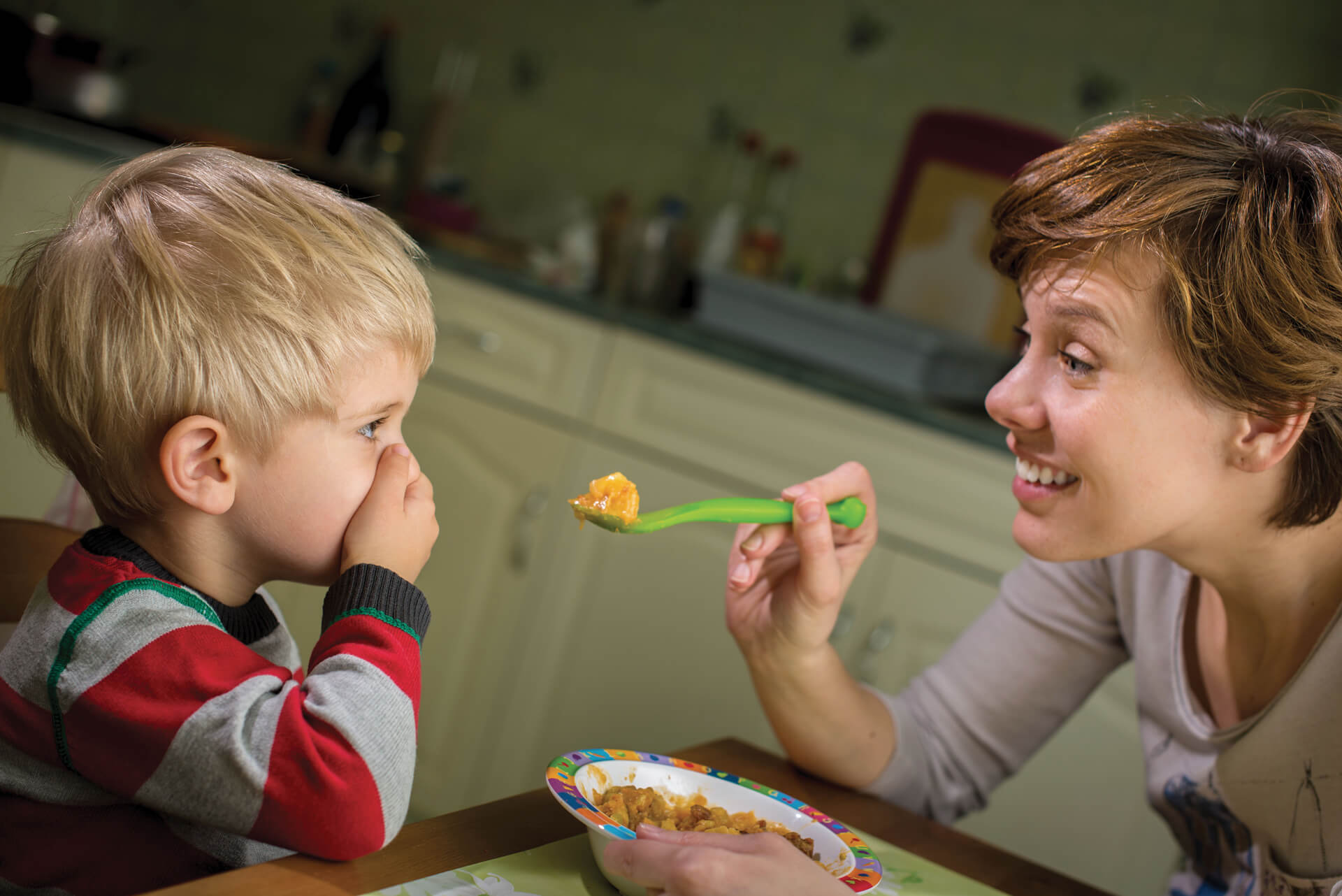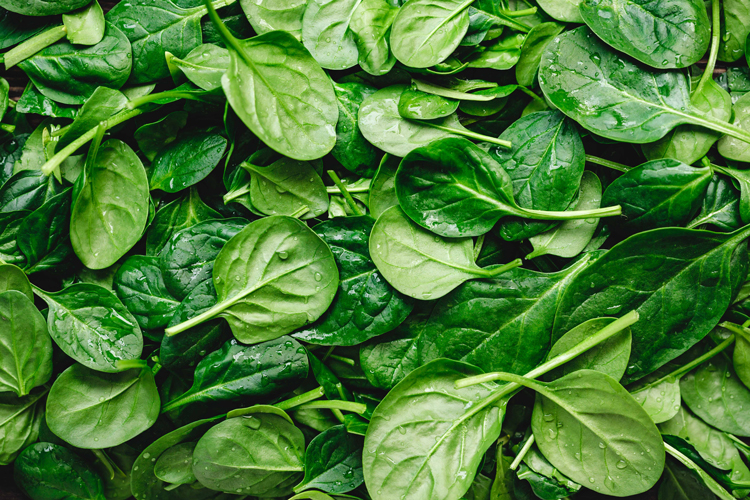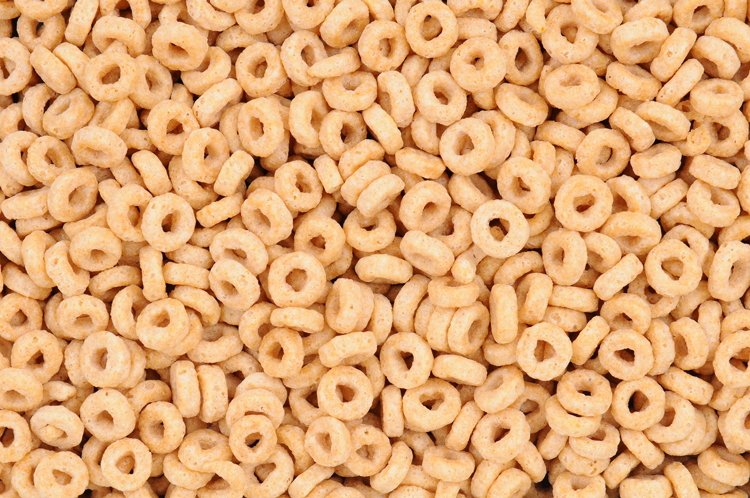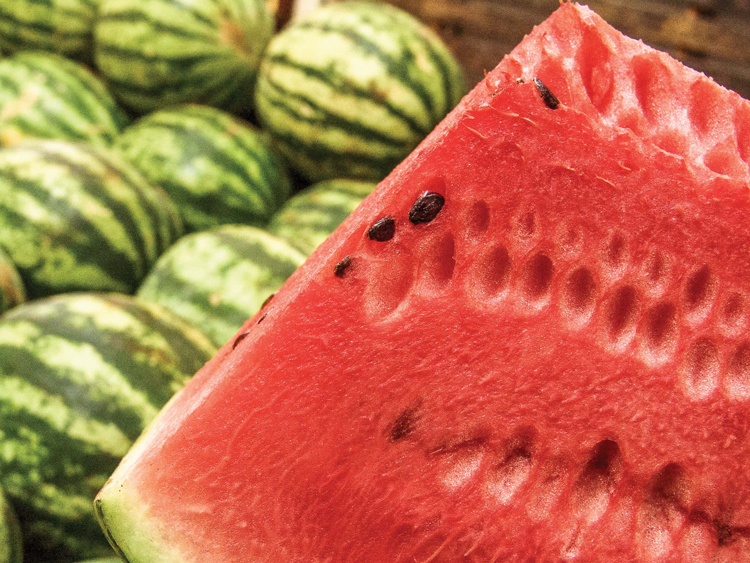
Iron Up for Good Health for Your Two to Five-Year Old
- Home
- Live Well Blog
- Iron Up for Good Health for Your Two to Five-Year Old
Ask any parent what their toddler’s favorite word is and chances are one of them will be “no!”
Ask any parent what their toddler’s favorite word is and chances are one of them will be “no!”
If your child starts saying “no” to foods they used to love, you’re not alone. Kids at this age sometimes go through “food jags” or times when they only want to eat a few foods. This can make it tough for parents who want to make sure their kids are getting the nutrition they need!
Food jags are one reason why kids aged 2-5 are at risk for iron deficiency anemia, and about 1 in 12 toddlers have iron deficiency.
Common Reasons for Iron Deficiency in Children:
- Being born prematurely.
- Not eating enough foods rich in iron.
- Drinking more than 24 oz. of milk daily.
What Can You Do?
- Serve more iron-rich foods.
- During meals, offer foods rich in vitamin C along with foods rich in iron. Vitamin C helps the body absorb iron.
- Limit milk to 2 cups each day.
Fe
Offer Foods Rich in Iron
- Spinach and Swiss chard
- Beef and pork
- Molasses
- Dark meat of chicken and turkey
- Fortified cereals—all WIC cereals have extra iron
- All beans, especially white beans, lentils, kidney beans and chickpeas
- Tofu
- Sardines
- Tomatoes
- Potatoes
- Egg yolk
Include Vitamin C
Iron is better absorbed by the body when a food rich in vitamin C is eaten at the same time. Vitamin C-rich veggies can be eaten before or with meals, and vitamin C fruits are great for dessert.
C
Foods rich in Vitamin C
- Kiwi
- Mango
- Papaya
- WIC juices
- Citrus fruits like oranges, tangerines, grapefruit
- Bell peppers, especially orange, red and yellow
- Cauliflower
- Melon
- Tomatoes and tomato sauce
- Broccoli
- Leafy greens like spinach, kale, and mustard greens
- Cabbage
Kid-friendly ideas on how to combine iron-rich and vitamin C-rich foods in the same meal.
Pasta and meatballs with marinara sauce; steamed broccoli or cauliflower.
Curried lentils with kale and brown rice; orange wedges.
What about a Multivitamin or Iron Supplement?
Sometimes children can’t get the iron they need just from the food they eat. If you’ve tried offering your child more iron-rich foods, but still worry if they’re getting enough iron in their diet, talk to your child’s healthcare provider about a multivitamin or iron supplement. Just remember if you keep chewable multivitamins or other supplements in your home, teach children they are like medicine, not candy. Keep all supplements out of reach of children. And even though they may taste yummy, most gummy multivitamins don’t include iron. Your child’s healthcare provider can recommend the best multivitamin or iron supplement option for your child.
Kids Refusing Foods? Don’t Force or Bribe
If your child has iron deficiency, you may be tempted to try anything to encourage them to eat the foods they need. But don’t—bribing, rewarding, forcing, or punishing children about their eating often backfires.
Instead, make mealtimes pleasant by having structured meal and snack times. Let your child help decide what you serve by giving them choices ahead of time.
- “Should we have lentils or pinto beans tonight?”
- “Do you want me to get chicken legs or ground beef for meatballs?”
- “Should we have a mango or an orange for dessert?”

REFERENCES:
Iron: Fact Sheet for Health Professionals
https://ods.od.nih.gov/factsheets/Iron-HealthProfessional/
Vitamin C: Fact Sheet for Health Professionals
https://ods.od.nih.gov/factsheets/VitaminC-HealthProfessional/










